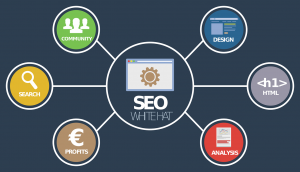In today’s digital landscape, search engine optimization (SEO) plays a vital role in driving organic traffic to your website. By implementing the best SEO practices, you can significantly increase your website’s visibility and rankings on search engine result pages (SERPs). In this article, we will explore effective strategies to optimize your website and improve its online presence.
Understanding Keywords: The Foundation of SEO
Keywords are the backbone of SEO. Start by conducting thorough keyword research to identify the terms and phrases your target audience is using to find products or services similar to what you offer. Utilize a mix of long-tail and short-tail keywords to capture diverse search intent.
Creating High-Quality Content
Content remains king in the digital world. Craft informative, engaging, and relevant content that provides value to your audience. Incorporate your target keywords naturally into your content, ensuring it reads smoothly and doesn’t feel forced.
Optimizing On-Page Elements
On-page optimization is crucial for search engine crawlers to understand your website’s content better. Make sure to optimize the following elements:
Title Tag
The title tag is a concise HTML element that summarizes the content of a web page. Craft compelling and keyword-rich title tags that accurately represent your page’s content. Keep them under 70 characters to ensure they don’t get cut off in SERPs.
Meta Description
While not a direct ranking factor, meta descriptions influence click-through rates. Write concise, persuasive meta descriptions that entice users to click on your link from the SERPs. Include relevant keywords to boost visibility.
URL Structure
Ensure your URLs are clear, concise, and contain relevant keywords. A well-optimized URL structure enhances user experience and helps search engines understand your page’s topic.
Header Tags
Use header tags (H1, H2, H3, etc.) to structure your content and highlight important sections. Incorporate relevant keywords naturally within the headers to give search engines additional context and improve readability.
Image Optimization
Optimize your images by compressing their file size without compromising quality. Use descriptive alt tags that include relevant keywords. This helps search engines understand your images and improves accessibility.
Building High-Quality Backlinks
Backlinks remain a critical ranking factor in SEO. Focus on acquiring high-quality backlinks from authoritative and relevant websites. Reach out to industry influencers, guest blog on reputable websites, or create engaging content that naturally attracts backlinks.
Mobile-Friendly and Responsive Design
With the majority of online searches now happening on mobile devices, having a responsive website design is paramount. Ensure your website is optimized for mobile devices, providing a seamless user experience across different screen sizes.

Site Speed Optimization
Website speed is an essential factor in both user experience and search rankings. Optimize your website’s loading speed by compressing images, minifying code, and leveraging browser caching. Regularly monitor your website’s performance and make necessary improvements.
Regular Content Updates
Frequently updating your website with fresh, valuable content signals to search engines that your site is active and relevant. Publish blog posts, news articles, or industry insights regularly to enhance your website’s visibility.

Conclusion
By implementing these best SEO practices, you can effectively optimize your website for increased visibility, higher rankings, and improved user experience. Remember to stay up-to-date with the latest SEO trends and adapt your strategies accordingly. With consistent effort and a focus on quality, your website will have a solid foundation to achieve online success.


